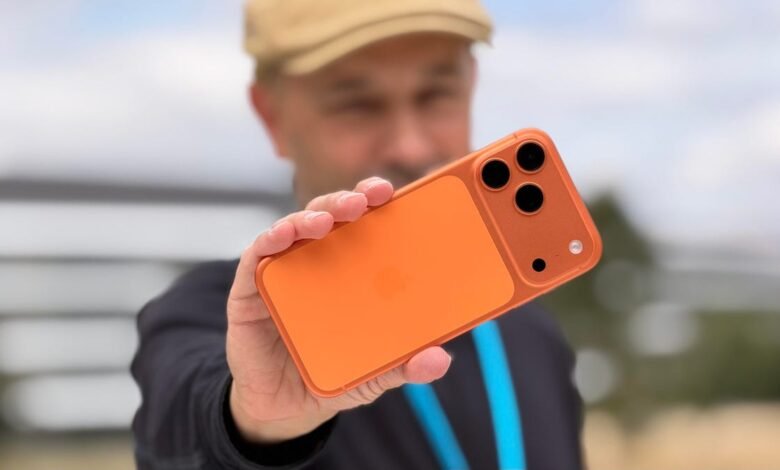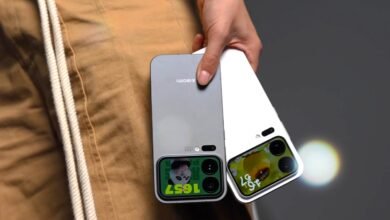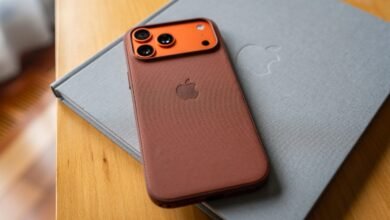iPhone 17 Lineup Compared: Which Model Should You Buy?

▼ Summary
– Apple’s iPhone 17 lineup includes four models: iPhone 17, iPhone 17 Pro, iPhone 17 Pro Max, and the new ultra-thin iPhone Air, replacing the Plus model.
– The iPhone 17 features ProMotion display technology for the first time in a base model, offering a 120Hz refresh rate and Ceramic Shield 2 protection.
– The iPhone Air is Apple’s thinnest iPhone ever at 5.6mm but sacrifices features like a dual rear camera and physical SIM slot for its slim design.
– iPhone 17 Pro models have advanced camera systems with three 48MP lenses and a redesigned brushed aluminum body with improved thermal management.
– The iPhone 17 Pro Max offers top-tier performance with the A19 Pro chipset and the best display in the series at 6.9 inches with 3,000 nits brightness.
Choosing the right iPhone 17 model can feel overwhelming with four distinct options now available. The lineup includes the iPhone 17, the iPhone 17 Pro, the iPhone 17 Pro Max, and the brand-new, ultra-slim iPhone Air. For the first time in years, Apple has dropped the Plus model, making room for this fresh, design-focused alternative. Each phone delivers substantial upgrades in display quality, processing power, and camera capabilities, but they cater to very different user preferences and budgets.
iPhone 17: The Smart Choice for Most People
If you want a premium screen without the high cost of a Pro device, the standard iPhone 17 is an excellent pick. Apple has brought its ProMotion display technology to the base model for the first time, offering an adaptive 120Hz refresh rate for incredibly smooth scrolling and responsive gaming. The screen is protected by the new Ceramic Shield 2, which improves durability and reduces glare.
Another strong reason to choose the iPhone 17 is its familiar design. While other models in the series have undergone significant aesthetic changes, this one retains the classic look with raised camera rings and sleek, contoured edges. Its size is identical to last year’s iPhone 16 Pro, so upgrading feels natural and seamless.
iPhone Air: For Those Who Prioritize Portability and Style
The iPhone Air represents Apple’s most daring design in recent memory. It measures a mere 5.6 millimeters thick, making it roughly one-third slimmer than the iPhone 16 Pro. This is the thinnest iPhone ever created, ideal for users who value an ultraportable and lightweight device.
Despite its slender profile, the iPhone Air doesn’t compromise on internal hardware. It features not one, but three specialized chips: the A19 Pro processor, the new N1 wireless chip supporting Wi-Fi 7 and Bluetooth 6, and the C1X cellular modem, which Apple claims is twice as fast as its predecessor.
To achieve this slim form, certain trade-offs were necessary. The iPhone Air includes only a single 48MP Fusion rear camera, though it supports both 28mm and 35mm focal lengths and can capture macro photos. It also relies exclusively on eSIM, so physical SIM cards are not supported. If you can accept these limitations, the Air offers a unique blend of style and performance.
iPhone 17 Pro: The Creative Powerhouse
Photography enthusiasts will appreciate the advanced camera system in the iPhone 17 Pro. While all models in the series benefit from an upgraded Center Stage selfie camera, the Pro goes further with a triple 48MP Fusion rear camera array. An updated Photonic Engine uses AI to preserve detail, reduce noise, and improve color accuracy, and a new 48MP telephoto camera excels in low-light conditions.
The iPhone 17 Pro also introduces a fresh design, moving away from the look established since the iPhone 12 Pro. It features a brushed aluminum unibody that is both lightweight and improves thermal management. A vapor chamber with de-ionized water helps dissipate heat from the A19 Pro chip. The rear includes a raised plateau that houses a larger battery, rated for up to 39 hours of video playback.
iPhone 17 Pro Max: The Ultimate Flagship Experience
For users who demand the very best, the iPhone 17 Pro Max delivers top-tier performance. It runs on the same A19 Pro chipset as the Pro model, with a 6-core CPU, 6-core GPU, and a 16-core Neural Engine for advanced AI tasks. The Neural Accelerators built into each GPU core enhance graphical performance, and the vapor chamber cooling system prevents overheating during intensive use.
It also shares the N1 networking chip with the iPhone Air, enabling Wi-Fi 7, Bluetooth 6, and Thread support, while improving the reliability of features like AirDrop.
Where the Pro Max truly stands out is its display. It boasts a massive 6.9-inch Super Retina XDR screen with ProMotion support for a 120Hz refresh rate. It reaches a peak brightness of 3,000 nits and offers twice the outdoor contrast of previous models. Like the iPhone Air, it uses Ceramic Shield 2 for superior screen protection.
Making Your Decision
Your final choice depends on what you value most. The iPhone 17 brings ProMotion to a broader audience at a more accessible price. The iPhone Air is for those who want extreme thinness and modern connectivity, even with some camera and SIM compromises. The iPhone 17 Pro is tailored for photographers and users wanting a redesigned body with pro-level features. The iPhone 17 Pro Max is the no-compromise option for users seeking the largest display, longest battery life, and maximum performance.
(Source: ZDNET)





